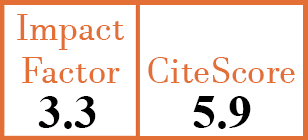Full Papers
Autoantibodies targeting LINE-1-encoded ORF1p are associated with systemic lupus erythematosus diagnosis but not disease activity
B. Antiochos1, M. Paz2, J. Li3, D.W. Goldman4, M. Petri5, E. Darrah6, K. Cashman7, I. Sanz8, K.H. Burns9, D. Ardeljan10, F. Andrade11, A. Rosen12
- Division of Rheumatology, Johns Hopkins University School of Medicine, Baltimore, MD, USA. bantioc1@jh.edu
- Division of Rheumatology, Johns Hopkins University School of Medicine, Baltimore, MD, USA.
- Division of Rheumatology, Johns Hopkins University School of Medicine, Baltimore, MD, USA.
- Division of Rheumatology, Johns Hopkins University School of Medicine, Baltimore, MD, USA.
- Division of Rheumatology, Johns Hopkins University School of Medicine, Baltimore, MD, USA.
- Division of Rheumatology, Johns Hopkins University School of Medicine, Baltimore, MD, USA.
- Division of Rheumatology, Emory University, Atlanta, GA, USA.
- Division of Rheumatology, Emory University, Atlanta, GA, USA.
- Department of Oncologic Pathology, Dana-Farber Cancer Institute, Boston, MS, and Department of Haematologic Pathology, Johns Hopkins University School of Medicine, Baltimore, MD, USA.
- Department of Medicine, Johns Hopkins University School of Medicine, Baltimore, MD, USA.
- Division of Rheumatology, Johns Hopkins University School of Medicine, Baltimore, MD, USA.
- Division of Rheumatology, Johns Hopkins University School of Medicine, Baltimore, MD, USA.
CER14817
2022 Vol.40, N°9
PI 1636, PF 1641
Full Papers
Free to view
(click on article PDF icon to read the article)
PMID: 34665712 [PubMed]
Received: 19/05/2021
Accepted : 13/09/2021
In Press: 13/10/2021
Published: 20/09/2022
Abstract
OBJECTIVES:
Long Interspersed Element 1 (LINE-1) is an endogenous retroelement that constitutes a significant portion of the human genome and has been implicated in the pathogenesis of systemic lupus erythematosus (SLE). The LINE-1 RNA chaperone protein ORF1p was recently identified as an SLE autoantigen. Here we analyse ORF1p for qualities underlying SLE autoantigen status, compared anti-ORF1p antibodies to markers of SLE disease activity, and performed screening for antibodies against LINE-1 reverse transcriptase ORF2p.
METHODS:
ORF1p was examined in epithelial cell lines treated with cytotoxic lymphocyte granules and UV irradiation. Anti-ORF1p and anti-ORF2p antibodies were assayed by ELISA and analysed in two SLE cohorts.
RESULTS:
We found that ORF1p localises to cytoplasmic RNA-containing blebs in apoptotic cells, and is a substrate of the cytotoxic protease granzyme B (GrB). Anti-ORF1p antibodies were present in 4.2% of healthy controls, compared to 15.8% (p=0.0157) and 15.5% (p=0.036) of subjects in the two SLE cohorts. Anti-ORF1p antibodies were not associated with SLE disease activity nor peripheral blood markers of interferon (IFN) activation. Anti-ORF1p titres demonstrated stability over serial time points. Anti-ORF1p antibodies were not associated with anti-DNA, anti-RNP, or other SLE autoantibodies. There was no difference in anti-ORF2p ELISA results in controls versus SLE patients.
CONCLUSIONS:
LINE-1 ORF1p is a component of apoptotic blebs and a substrate for GrB. Anti-ORF1p antibodies are enriched in SLE subjects but are not associated with dynamic markers of disease activity. These data support a potential role for LINE-1 dysregulation in SLE pathogenesis.



